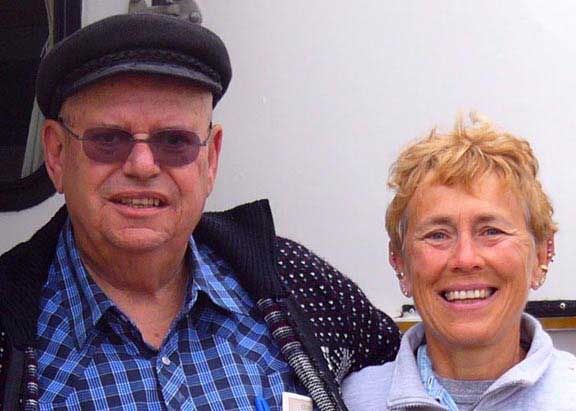Our time is up here at Nevada Treasure in Pahrump, NV. Tomorrow morning we will pull-out for our annual trip East to our summer home in Leelanau County, Michigan where we will stay until October.
Here is an itinerary of our planned overnight stops along the way from here to Appleton, WI where we will spend a few days visiting our son & daughter in-law and old friends from when we lived there.
Here is a map showing those same overnight stops.
Barring any unforseen snags we then will travel on to Michigan arriving there on or about May 1.
Over the winter we had some additional work done on the farmhouse by our contractor, Gerard Belanger and can't wait to see the result.
We are former fulltime RVers, who lived and traveled in a fifth wheel trailer for six years and now have settled on a cherry farm in Northwestern Michigan's Leelanau County.
About Me

- Larry & Teddy
- Cedar, Leelanau County, Michigan (near Traverse City), United States
- I am a 76 year old (born 7/4/1937) retired Public Radio Engineer from Lawrence University in Appleton, Wisconsin. Happily married to the love of my life, Teddy (nee Teddy Schlueter). Teddy is a retired Medical Records Clerk from Theda Clark Hospital in Neenah, Wisconsin. Two children, Michael and Lon. Lon passed away in 1994. Michael is married to his wonderful wife, Toni and lives in Appleton, Wisconsin. For photos click on link below or visit our photo site http://www.flickr.com/photos/igboo NOTE: Click on photos for full-size images.
Friday, April 01, 2011
Recent Advances in Science 2011
Recent Advances in Science
(4/1/11 • AF News
by Pearl Gray
WASHINGTON –– At a press conference held this morning at the Sleep Research Center at the The National Institutes of Health in Bethesda, Maryland it was revealed that for over a decade neurologists have been working on a project that allows humans to live without the need to sleep. While working on a program investigating the underling causes of Attention-deficit hyperactivity disorder (ADHD), Doctor Roland Jerrome noticed cognitive function correlations between REM sleep patterns and sleep deprivation. He was then able to get a research grant for further research and formed the "Sleep Research Center" under the auspices of the National Institutes of Health. A breakthrough came in 2001 when he implanted a microchip transducer behind the ear of a rhesus monkey. Probes from the implant were then routed into the ocular nerve center in the cerebral cortex and occipital lobe of the brain. It was then programmed to send artificial REM sleep signals. Astonishingly it appeared that the subject did not seem to require sleep and in fact was quite active during normal sleep periods.
In late 2003 an improved device dubbed a "stemulator", was implanted successfully in a human volunteer, another in 2005, two more in 2006, two in 2009, and in four subjects in 2010. That makes a total of ten subjects who are currently "wearing" the device and Dr. Jerrome said that they will be taking applications for twenty more volunteers in 2011. None have slept at all since their implants were installed. The stemulator implants are programmable wirelessly from a central transmitter which sends a pre-programmed "Sleep Dose" individually to each participant when it detects prefrontal cortex and parietal lobe activation.
Currently the only drawback is that the subject has to remain within range of the center's transmitter for at least twenty minutes in any 24 hour period. However, Dr. Jerrome is working on a physical receptacle not unlike the USB connector on your computer that can be implanted behind the ear to allow an individual to plug in a dose of eight hours of sleep whenever the need arises. If the individual desires, he or she can skip this step and would then go into a normal sleep cycle. It is presumed that most people would initially opt to live their lives with normal sleep cycles and only program in sleep when needed (a cross country motor trip for instance). The advantages to emergency responders, long haul truckers, airline pilots, medical workers, military personnel, etc. are obvious. Applications may also include the ability to produce a suspended animation state that would allow astronauts to travel to deep space regions.
Future generations will most likely adjust work and production schedules for most activities across the board. Dr. Jerrome also stated that it is not unforeseeable that in the future, DNA or RNA splicing may make it possible to achieve the same results without the need of a physical device.
Dr. Jerrome predicts that barring any unforeseen setbacks, the procedure could become available to the general public by mid 2015.
Subscribe to:
Comments (Atom)

